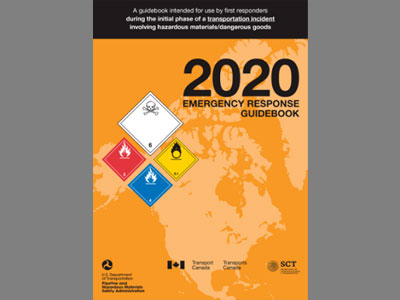 |
Creating a Supportive Classroom Community (CDA 3) |
2.00 |
Learn ways to bring out nurturing, caring behaviors in children and youth to create a classroom community where children and youth support each other. Learn how to use non-competitive games to foster acceptance of all children and youth. Identify the strengths and weaknesses for both you and the children and youth in your program, and how to put the strengths to good use creating a sense of acceptance and community. This course is designed to be part of a Child Development Associate (CDA) Credential™ curriculum. It covers CDA Subject Area 3: Supporting Children's Social and Emotional Development and may also be taken as a stand-alone learning event or as part of a broader early childhood education curriculum. |
 |
Understanding Poverty and Practical Strategies (CDA 3 & 4) |
2.00 |
This course empowers early care and education professionals to build strong relationships with families facing economic challenges. Delve into the realities of poverty and its impact on family dynamics. Discover practical communication strategies tailored to bridge understanding and effectively connect families with essential resources and support networks. Watch trust and collaboration flourish as you create a truly inclusive and supportive learning environment for every child. |
 |
Selecting and Implementing Curriculum to Support Learning (CDA 5 & 7) |
2.00 |
This course dives into the heart of early childhood program development, empowering you to select engaging activities, courses, and resources. Explore key factors to consider and unlock effective implementation strategies that nurture your children's learning and skill development. Watch their curiosity blossom as you create a dynamic curriculum tailored to their unique needs and interests. |
 |
Daily Schedule Development with Child-Centered Activities (CDA 5) |
2.00 |
This course delves into the essential balance of structure and flexibility within early learning environments. Discover how a well-ordered daily schedule fosters confidence and security in young children while nurturing their natural curiosity. Explore strategies for creating age-appropriate schedules that meet their developmental needs and unlock the power of child-centered learning opportunities. |
 |
Supporting Children and Families Through Transitions (CDA 5) |
2.00 |
This course explores the diverse transitions young children encounter within a child care setting, from joining a new program to moving between rooms or saying farewell. Gain valuable insights into the emotional and developmental impact of these experiences, and discover practical strategies to help children smoothly adjust and thrive. Empower yourself to become a champion of positive transitions, fostering a sense of security and belonging for every child under your care. |
 |
Strategic Decision Making: Preparing to Make Decisions (Instructor Guide) |
1.50 |
In this course you will learn to: identify the factors that influence the outcome of a decision, and follow the steps of the decision-making process, define your decisions appropriately by establishing objectives, identify the problems decision frames can present, and the actions you can take to understand decision frames, and identify the guidelines for avoiding the problem of overconfidence, and describe the techniques for managing uncertainty.
This Instructor's Edition of this course includes notes and suggestions to assist you in presenting the material, whether in an in-person classroom setting or as an instructor-led online or distance-learning course. It also provides you with the answers to questions found in mid-lesson activities, as well as in the quiz that concludes the course. |
 |
Exploring Developmental Needs and Characteristics: Age Group 8 to 10 for Paraprofessionals |
1.00 |
Certain developmental needs and traits are associated with younger school-age children, while others are typical of older school-age children. While the differences between school-age children of different ages are not clear-cut, there are some general traits and tasks that are often associated with younger school-age children. This course delves into the specific traits of students between the ages of 8 and 10. |
 |
Initiating an Emergency Response |
0.50 |
This course describes a procedure for responding to the report of an emergency. This course will describe how to initiate an emergency response when receiving alarms via the firehouse non-emergency-phone, a walk up to quarters, and reporting an emergency that occurs in the firehouse. This course reviews the skills required to use equipment to receive, record, and transmit an incoming alarm. This course also includes several scenarios during which the student uses a simulated procedure to initiate a response to several types of reported emergencies. The clock time for this course is approximately one-half hours. |
 |
Understanding Adverse Childhood Experiences (ACEs) (CDA 3) |
2.00 |
Children who are exposed to adverse childhood experiences (ACEs) face an increased risk for social-emotional, physical, and mental health issues. ACEs include abuse, neglect, parental separation or divorce, and other traumatic experiences before the age of eighteen. This course explores the awareness of trauma in young children and families and discusses the role of the early care and education professional in nurturing resilience. This course will help you to better understand ACEs and trauma. |
 |
The Purpose for Ethical Commitment (CDA 6) |
2.00 |
This course explores the NAEYC Code of Ethical Conduct, equipping you to uphold your responsibilities and moral obligations towards children, families, colleagues, and the wider community. Discover how this essential framework guides your interactions and decisions, fostering a foundation of trust, respect, and professionalism in your work. |
 |
Foundation for School Success (CDA 6) |
2.00 |
Beyond simply academic skills, "school readiness" encompasses the holistic development of young children, encompassing social, emotional, physical, and cognitive domains. This course empowers early childhood professionals to support this development from infancy through preschool, laying a strong foundation for future success in kindergarten and beyond. |
 |
Developing Methods of Observation (CDA 7) |
2.00 |
Learning child observation skills can be a powerful tool for solving some of the most difficult problems faced by child care providers. Concerned about a child’s behavior? Want to know how to plan successful activities? Observation skills can help. Learn more about each child and his/her development using the methods of observation in this course. This course provides examples of good observation techniques and demonstrates skills necessary for useful observations. It covers CDA subject area 7: Observation and Assessment, and can also be taken as a stand-alone learning event or as part of a broader early childhood education curriculum. |
 |
Advocating for Early Childhood Care (CDA 6) |
2.00 |
This course equips you with the tools and knowledge to become a powerful advocate in the early childhood system. Explore various advocacy roles, tap into a wealth of resources, and dive deep into your responsibilities as an advocate. Prepare to take action, make your voice heard, and be a transformative force for young learners. |
 |
Organizational Communication: Technology in the Workplace (Instructor Guide) |
0.84 |
The impact of technology has sped up the communication process in organizations. As a result, communication can occur at any time and place. To facilitate effective communication in an organization, you need to identify and use different communication technologies.
In this course you will learn to: identify the various categories of technologies, identify the impact of technology on organizations, and identify the guidelines for applying technology in an organization.
This Instructor's Edition of this course includes notes and suggestions to assist you in presenting the material, whether in an in-person classroom setting, or as an instructor-led online or distance-learning course. It also provides you with the answers to questions found in mid-lesson activities, as well as in the quiz that concludes the course. |
 |
Exploring Developmental Needs and Characteristics: Age Group 5 to 7 for Paraprofessionals |
1.00 |
Certain developmental needs and traits are associated with younger school-age children, while others are typical of older school-age children. While the differences between school-age children of different ages are not clear-cut, there are some general traits and tasks that are often associated with younger school-age children. This course delves into the specific traits of students between the ages of 5 and 7. |
 |
Fire Suppression Tactics |
1.00 |
No other tactic on the fireground has a higher potential for saving lives and protecting property than Fire Suppression. Suppression on the fireground can be deployed in multiple strategies and performed through a variety of methods. This course will discuss the application of suppression tactics and tasks while operating in different operational modes under strategies selected as a result of assessed risk. Application of these suppression tactics are matched with the appropriate strategy and task methods are introduced. Each type of suppression task method is described in detail along with a review of its specific strengths and weakness. |
 |
Fundamental Tools to Monitor Child Development (CDA 7) |
2.00 |
This course immerses early care and education professionals in the powerful trio of observation, documentation, and assessment. Discover how these tools allow you to closely monitor each child's progress, identify individual needs and interests, and tailor support accordingly. Dive deeper into using assessment activities to refine and elevate the quality of preschool care, ensuring every child reaches their full potential. |
 |
Brain Development in Infants and Toddlers (CDA 8) |
2.00 |
Brain development has changed over the last 20 years. Early brain development focused mainly on the intellectual aspects of the brain, but over the last 10 years, more focus has been placed on the social emotional exchanges in infancy and how that affects brain development. Early experiences predispose how children see the world. This course is designed to be part of a Child Development Associate (CDA) Credential™ curriculum and covers CDA Subject Area 8, Understanding Principles of Child Development and Learning. This course can also be taken as a stand-alone learning event or as part of a broader early childhood education curriculum. |
 |
Developing High Quality Inclusion Practices (CDA 8) |
2.00 |
Creating high-quality inclusive programs empowers children with disabilities to learn and thrive alongside their typically developing peers. However, knowledge and skill gaps often hinder educators in implementing effective inclusion practices. This session dives into the essence of inclusion in early childhood settings, fostering awareness and equipping you to start the inclusion conversation. Explore the core principles and best practices to cultivate truly inclusive learning environments for all children. |
 |
Understanding Learning Theories (CDA 8) |
2.00 |
This course dives into the fascinating world of learning theories, empowering you to select activities, courses, and materials that ignite young minds. Explore key concepts that guide your choices, ensuring an age-appropriate and individualized learning experience for every child. Watch their potential blossom as you translate theory into practice, fostering a classroom environment that fuels curiosity and cultivates lifelong learners. |
 |
Building Foundations for Language and Literacy Development (CDA 8) |
2.00 |
Did you know infants are language-learning powerhouses? Their brains are primed to soak up any language. But to unlock their speaking potential, they need your voice! This session empowers you to discover playful ways to nurture language and literacy skills in infants and toddlers. Together, we'll assess current practices and identify opportunities to strengthen the foundation for a lifelong love of language and learning. |
 |
Organizational Communication: Relational Context and Organizations (Instructor Guide) |
0.75 |
The relational context of a communication exchange includes the circumstances, within an organization, that necessitate this exchange between employees. A number of factors affect the relational context, including the status of the employees within the organization, their motivation, and their relationship with other employees. All communication within an organization depends on the intent of the participants.
In this course you will learn to: identify the relational context and the factors that influence it, and identify the different personality types, and develop individual-organizational relationships.
This Instructor's Edition of this course includes notes and suggestions to assist you in presenting the material, whether in an in-person classroom setting, or as an instructor-led online or distance-learning course. It also provides you with the answers to questions found in mid-lesson activities, as well as in the quiz that concludes the course. |
 |
Creativity and Innovation: Promoting Team Creativity (Instructor Guide) |
1.34 |
The purpose of a team is to bring together people with diverse personalities, knowledge, education, and experience. This combined diversity encourages creativity and productivity to accomplish a common goal. Teams might consist of people from a single department or several departments.
Teams can generate new ideas, expand on or improve current ideas, make decisions, and solve problems. Teams can also be assigned to a specific task or be made responsible for a broader area, such as responding to changing customer expectations. When team members recognize their roles in a team, and the manager performs his responsibilities, creativity has a better chance of flourishing.
In this course you will learn to: identify characteristics of creative teams, and manage these teams effectively, conduct creative team sessions, and conduct brainstorming sessions, and use creativity to solve problems.
This Instructor's Edition of this course includes notes and suggestions to assist you in presenting the material, whether in an in-person classroom setting, or as an instructor-led online or distance-learning course. It also provides you with the answers to questions found in mid-lesson activities, as well as in the quiz that concludes the course. |
 |
Emergency Response Guidebook Activity |
1.50 |
This course is an activity that requires the first responder to utilize the Emergency Response Guidebook to solve a variety of problems. The solution to each of these problems can be found using the 2020 Emergency Response Guidebook Version. Students will need to have a copy of the Emergency Response Guidebook Version 2020 to complete this activity. A 2020 Emergency Guidebook PDF is available for download in this lesson if a copy of the book is not available to the student.
It should be noted that this is an in-service training activity. The student must have prior knowledge and training regarding the Emergency Response Guidebook prior to engaging this activity.
|
 |
Food Allergy Basics in Early Childhood (CDA 1 and 5) |
3.00 |
Welcome to Food Allergy Basics in Early Childhood. This course is focused on ways to prevent accidental exposure to foods that can cause an allergic reaction. You will be able to describe ways to prevent accidental exposure to foods that cause an allergic reaction. You will also be able to demonstrate how to read a food label to reduce the risk of accidental exposure to foods that can cause an allergic reaction. In addition, you will learn how to use a Food Allergy and Anaphylaxis Emergency Care Plan to care for a child with a food allergy and identify the symptoms and triggers of food allergies. This course is also designed to be part of a Child Development Associate (CDA) Credential™ curriculum. It covers Subject Area 1: Planning a Safe, Healthy Environment to Invite Learning and Subject Area 5: Managing an Effective Program Operation. |


























